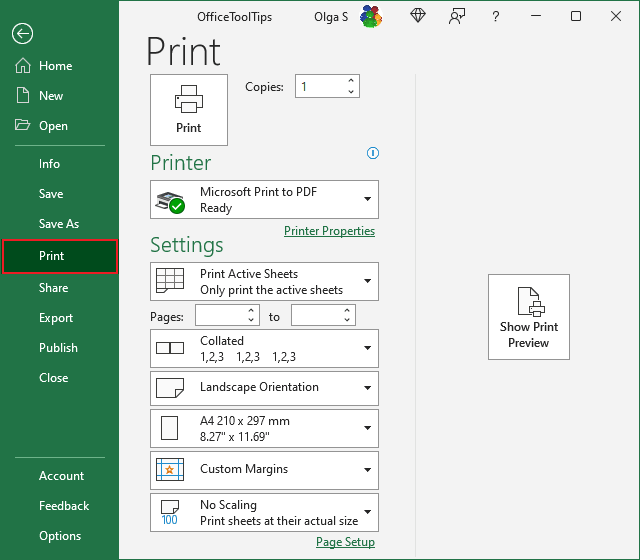How to Print Larger Excel Sheets Easily

If you’ve ever found yourself grappling with printing large Excel sheets, you're not alone. Managing Excel printing can be overwhelming due to the sheer volume of data, but with the right techniques, you can streamline the process significantly. This comprehensive guide will walk you through various methods to print your Excel spreadsheets efficiently, ensuring clarity, professionalism, and ease.
Understanding Excel Sheet Layouts

Before you dive into printing, it’s crucial to understand how Excel organizes data. Excel spreadsheets are essentially grids where rows and columns intersect to form cells. Each sheet has:
- A set number of rows and columns.
- Printable areas defined by Page Layout settings.
- Gridlines, which you can choose to show or hide.
- Print Titles to repeat on every page for context.
Having a clear understanding of these elements helps in effectively preparing your document for printing.
Setting Print Area

Defining the print area is the first step to ensure you’re printing what you intend to:
- Go to the Page Layout tab.
- Select Print Area.
- Click on Set Print Area to choose the cells you want to print.
📌 Note: Only the cells within the defined print area will be included in the final printout.
Adjusting Page Layout

Proper page setup can make a significant difference in how your data appears on paper:
- Orientation: Switch between portrait and landscape for optimal page use.
- Paper Size: Adjust to match your printer’s capabilities.
- Margins: Tweak to fit more data or for aesthetic reasons.
- Headers and Footers: Add details like page numbers or titles.
- Scale to Fit: Use this to automatically adjust the content to fit within the pages.
| Setting | Action |
|---|---|
| Orientation | File > Print > Orientation |
| Paper Size | File > Print > Paper Size |
| Margins | File > Print > Margins |

Using Page Breaks to Control Printing

To control how your data splits across pages:
- Select the rows or columns where you want a page break.
- Go to the Page Layout tab.
- Click Breaks and choose Insert Page Break.
This ensures that critical data isn’t cut off or lost in the transition between pages.
Dealing with Multiple Pages

When your Excel sheet spans multiple pages, consider the following:
- Print Titles: Set rows or columns to repeat at the top of each printed page.
- Pagination: Use Excel’s Print Preview to check the layout across pages.
- Gridlines and Headings: Include them if they add to the readability of your printout.
Printing Specific Data Ranges

Sometimes, you need to print only specific parts of your Excel sheet:
- Select the range of cells you want to print.
- Go to File > Print > Print Active Sheets, or for selected cells, choose Print Selection.
💡 Note: This method is particularly useful for printing different sections of a large sheet without needing to redefine the print area.
Enhancing Readability with Formatting

Before printing, enhance the clarity of your data:
- Apply Conditional Formatting for visual distinction.
- Use Freeze Panes to keep headers in view while working.
- Utilize Excel’s sorting and filtering capabilities to manage data presentation.
Advanced Printing Tips

Here are some advanced techniques to take your Excel printing to the next level:
- Conditional Formatting for Printing: Automatically format data based on specific conditions.
- Insert Blank Rows for Visual Breaks: This can help segment large datasets for easier reading.
- Excel Printing Tips: Consider using print previews frequently to catch any issues early on.
Summarizing Key Points

In this guide, we’ve explored various techniques to effectively manage and print large Excel sheets. By setting the print area, adjusting the page layout, controlling page breaks, and enhancing readability through formatting, you can ensure that your data is presented clearly and professionally. The advanced tips provide additional methods to refine your printing approach, making the process not only easier but also more tailored to your specific needs.
Can I print hidden rows or columns in Excel?

+
Yes, if you’ve set a print area that includes hidden rows or columns, Excel will print them even if they are not visible on the screen.
How can I change the print orientation of my Excel document?

+
Navigate to File > Print, then select the desired orientation from the “Orientation” drop-down menu under “Settings.”
What if my Excel sheet doesn’t fit on one page?

+
Excel provides options like Page Break Preview to adjust where pages split, and you can also scale your document to fit within the print range using the Scale to Fit feature.
Why are my gridlines not printing with my data?

+
Gridlines might not print if they are turned off. You can enable them for printing from the Page Layout tab by checking Print Gridlines under Sheet Options.
Can I preview my Excel sheet before printing?

+
Absolutely, use the Print Preview option from the File > Print menu to see exactly how your document will appear on paper before printing.